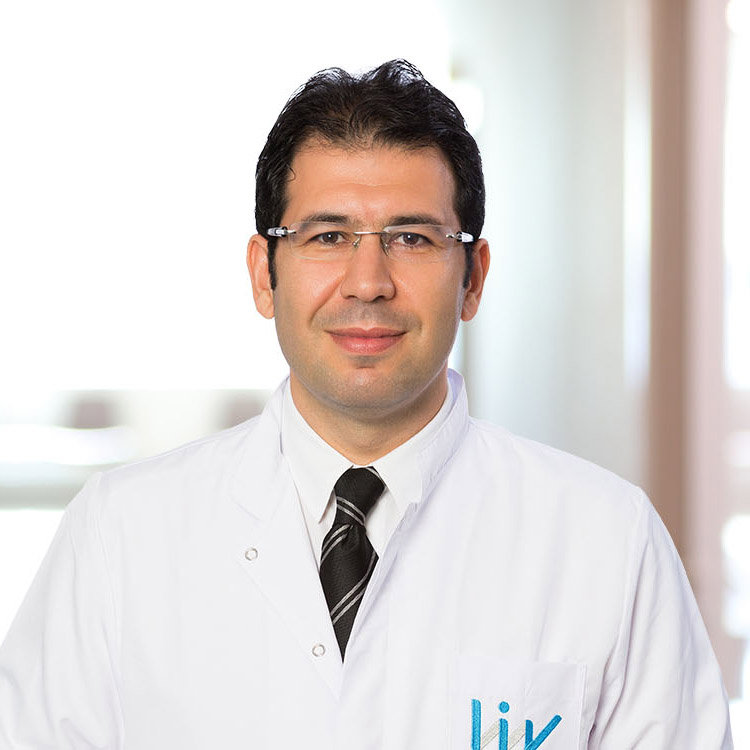Orthopedics and
Traumatology
Make an Appointment
Online Schedule
WHAT ISORTHOPEDICS?
In the Orthopedics and Traumatology department, diseases in the musculoskeletal system are treated by our doctors using latest technology devices. Surgical interventions can be applied to body damage caused by injuries and accidents. Orthopedics and Traumatology departments and physical therapy departments work in coordination.
The Orthopedics and Traumatology department deals with the legs, spine and pelvis areas, all joints, bones, muscles and related tissues (vessels, nerves, spinal cord).
Our doctors offer personalized treatments in a wide range from hand surgery to prosthetic surgery.
Orthopedics Department Diagnosis and Treatments
Hand Surgery
Hand surgery; It is an area that requires hand coordination and precise hand movements. Hand surgery; deals with hand injuries requiring microscopic vascular nerve repair, tendon repair, bone joint restoration. At the same time, hand surgery deals with trigger finger, polydactyly (6 fingers), syndactyly (adhesive fingers), carpal tunnel (nerve compression), hand deformities (tendon transfer) due to CP sequelae.
Knee Surgery, Arthroplasty and Arthroscopic Applications
In the knee joint; Treatment methods such as closed (arthroscopic) or open surgery (knee prosthesis) are applied in common diseases such as meniscus tear, ligament tear, cartilage damage, joint narrowing, osteoarthritis.
Ankle Surgery and Arthroscopic Surgery
Ankle surgery deals with the treatment of diseases such as osteochondral damage in the talus dome, impingemen synovitis of the tibia distal end anterior, and FHL tenosynovitis.
Shoulder Surgery, Arthroplasty Arthroscopy and Elbow Surgery
Shoulder surgery deals with the treatment of diseases such as shoulder joint dislocation, SLAP lesion (Biceps tendon damage), Impingement (Compression and pain due to bone lengthening), Frozen shoulder, Tennis elbow, Radius head dislocation with arthroscopic (closed) or open surgery.
Hip Surgery Arthroplasty Arthroscopic Surgery
Hip surgery deals with the treatment of diseases such as congenital hip dislocation, Impingement, (Bone compression), Labral defect, Osteoconphral defect, Osteoarthritis (Calcification) with open surgery or closed (arthroscopic) surgery.
Pediatric Surgery
Pediatric surgery deals with the treatment of diseases such as congenital hip dislocation, Perthes disease, Torticollis, Brachial plexus damage, clubfoot sequelae.
Oncological Surgery
Oncological surgery deals with benign or malignant tumors in one area of the skeletal system, such as bone, muscle, tendon, nerve, and joint.
Treatments during the year.
Treatments during the year.
Treatments during the year.


Informations AboutScoliosis
Scoliosis is among spinal deformities. Scoliosis is a three-dimensional spinal disorder. This disorder occurs due to a structural disorder of the spine or other reasons. Some of the scoliosis diseases can be treated. Some advanced scoliosis diseases cannot be cured. There are different types of scoliosis disease. These types are:
- Idiopathic Scoliosis
- Neuromuscular Scoliosis
- Congenital Scoliosis
The doctor first conducts a physical examination of the patient. Age is very important for the diagnosis of scoliosis.
Diagnosis of Congenital Scoliosis: X-ray, MRI, Ultrasound and other tests are performed for the patient. After the examinations, information is given about the treatment of the patient.
Adult Scoliosis Diagnosis: The patient’s complaints and the degree of curvature of the scoliosis are very important. The examinations to be made in the diagnosis of scoliosis are very important. The doctor conducts the following examinations:
- Computed Tomography
- Direct Radiography
- Electro Diagnostic Tests
- MRI
In the treatment of scoliosis, the age of the patient and the degree of scoliosis are very important. Scoliosis treatment in children is usually surgical operations. Adult scoliosis treatment is usually physical therapy or, in some cases, surgical operations.
Surgical Treatment: It is the most suitable method for the treatment of children’s congenital spinal deformity. The curvature of scoliosis is tried to be controlled with surgical treatments. It is very important to control scoliosis by doctors after surgery. After surgery, patients can receive physical therapy. Non-advanced scoliosis is easier to treat at an early age.
Scoliosis Treatments in Adults: The first treatment methods to be applied to scoliosis patients at advanced ages are physical therapy and rehabilitation. Medication is given under the control of a doctor to reduce pain. Surgical operations are performed on patients who do not respond to drug therapy and physical therapy.






